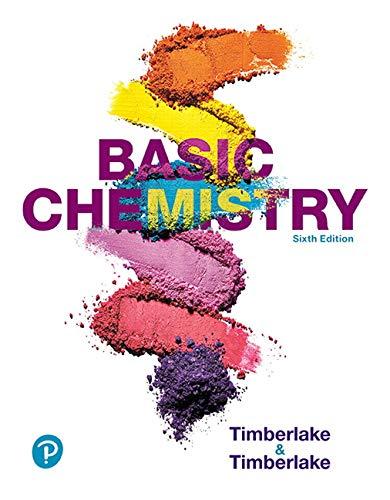
Concept explainers
(a)
Interpretation: The reason should be explained for considering corn and peas as complementary proteins.
Concept Introduction: The proteins that are formed by the combination of two or more incomplete proteins are said to be complementary proteins. To get all the nine amino acids into a vegetarian's diet, protein complementation is the most effective way.
(b)
Interpretation: The reason should be explained for considering rice and soy as complementary proteins.
Concept Introduction: The proteins that are formed by the combination of two or more incomplete proteins are said to be complementary proteins. To get all the nine amino acids into a vegetarian's diet, protein complementation is the most effective way.
Want to see the full answer?
Check out a sample textbook solution
Chapter 18 Solutions
Basic Chemistry Plus Mastering Chemistry With Pearson Etext -- Access Card Package (6th Edition)
- Enzymes called amino acyl-tRNA synthetases: A. attaches amino acids to tRNA B. synthesizes tRNA C. destroys tRNA molecules D. synthesizes amino acidsarrow_forward34. Which of the following is not a property of amino acids a. Buffer 35. The protein primary structure is held together by a. Hydrogen bonds b. Isoelectric point C. Zwitterions d. Insoluble in water b. Disulfide bonds c. Peptide bonds d. Protein bondsarrow_forwardThe covalent bond that links two sugar monomers is known as a: A. Peptide bond B. Hydrogen bond C. glycosidic bond D. Phosphodiester bondarrow_forward
- a. Lipid hydrolyis b. Acrolein Test c. Test for unsaturation d. Test for phosphates e. Liebermann-Burchard testarrow_forwardWhat is the secondary structure of DNA? a. double helix b. random cail c. An alpha-helix d. pleated sheet e. fat sheetarrow_forwardHuman Immunodeficiency Virus belongs to the family: A.Retroviridae B.Retroviridians C.Retroviral organisms D.Retrovirusiaearrow_forward
 Chemistry for Today: General, Organic, and Bioche...ChemistryISBN:9781305960060Author:Spencer L. Seager, Michael R. Slabaugh, Maren S. HansenPublisher:Cengage Learning
Chemistry for Today: General, Organic, and Bioche...ChemistryISBN:9781305960060Author:Spencer L. Seager, Michael R. Slabaugh, Maren S. HansenPublisher:Cengage Learning
 World of Chemistry, 3rd editionChemistryISBN:9781133109655Author:Steven S. Zumdahl, Susan L. Zumdahl, Donald J. DeCostePublisher:Brooks / Cole / Cengage Learning
World of Chemistry, 3rd editionChemistryISBN:9781133109655Author:Steven S. Zumdahl, Susan L. Zumdahl, Donald J. DeCostePublisher:Brooks / Cole / Cengage Learning Introductory Chemistry: A FoundationChemistryISBN:9781337399425Author:Steven S. Zumdahl, Donald J. DeCostePublisher:Cengage Learning
Introductory Chemistry: A FoundationChemistryISBN:9781337399425Author:Steven S. Zumdahl, Donald J. DeCostePublisher:Cengage Learning



